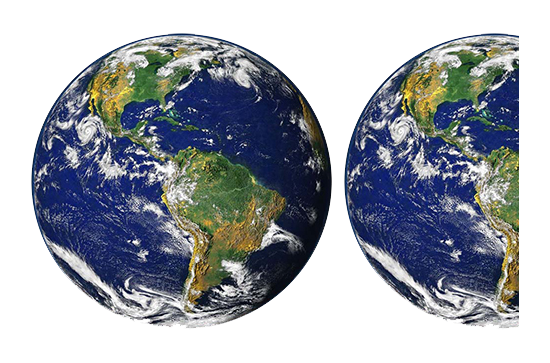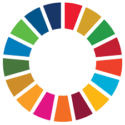
Today we live in the Anthropocene epoch – the age of the humans, so called by geologists due to the massive impact humans have had on the planet earth. Human activities i.e. industrial activities primarily, has had and continues to have a profound negative impact on the environment – air, water, soil – , biodiversity of the planet, natural habitats and ecosystems and various plants and animal species. According to the landmark report from the Intergovernmental Science-Policy Platform on Biodiversity and Ecosystem Services (IPBES), presented and approved at the 7th session of the IPBES Plenary meeting held in April/May 2019 in Paris ‘nature is declining globally at rates unprecedented in human history – and the rate of species extinctions is accelerating, with grave impacts on people around the world now likely.’ Below are some of the key findings and statistics from this landmark report:
- Three-quarters of the land-based environment and about 66% of the marine environment have been significantly altered by human actions. On average these trends have been less severe or avoided in areas held or managed by Indigenous Peoples and Local Communities.
- More than a third of the world’s land surface and nearly 75% of freshwater resources are now devoted to crop or livestock production.
- The value of agricultural crop production has increased by about 300% since 1970, raw timber harvest has risen by 45% and approximately 60 billion tons of renewable and nonrenewable resources are now extracted globally every year – having nearly doubled since 1980.
- Land degradation has reduced the productivity of 23% of the global land surface, up to US$577 billion in annual global crops are at risk from pollinator loss and 100-300 million people are at increased risk of floods and hurricanes because of loss of coastal habitats and protection.
- In 2015, 33% of marine fish stocks were being harvested at unsustainable levels; 60% were maximally sustainably fished, with just 7% harvested at levels lower than what can be sustainably fished.
- Urban areas have more than doubled since 1992.
- Plastic pollution has increased tenfold since 1980, 300-400 million tons of heavy metals, solvents, toxic sludge and other wastes from industrial facilities are dumped annually into the world’s waters, and fertilizers entering coastal ecosystems have produced more than 400 ocean ‘dead zones’, totalling more than 245,000 km2 (591-595) – a combined area greater than that of the United Kingdom.
- The Report also presents a wide range of illustrative actions for sustainability and pathways for achieving them across and between sectors such as agriculture, forestry, marine systems, freshwater systems, urban areas, energy, finance and many others. It highlights the importance of, among others, adopting integrated management and cross-sectoral approaches that take into account the trade-offs of food and energy production, infrastructure, freshwater and coastal management, and biodiversity conservation.
- Also identified as a key element of more sustainable future policies is the evolution of global financial and economic systems to build a global sustainable economy, steering away from the current limited paradigm of economic growth.
- Read More….
The above facts clearly indicate that sustainability is no doubt the need of the hour. The 1987, United Nations Brundtland Commission defined sustainability as “meeting the needs of the present without compromising the ability of future generations to meet their own needs.” Yet, this is clearly unfeasible if we follow the traditional business as usual path. According to the World Bank, 27 countries belong to the low income category and 55 countries belong to the lower middle income category. That is a whopping 42% of countries ! The World Bank categorizes countries into four income groups based on their GNI per capita in current USD of the previous year. The four income groups are as follows:
| Group | Per Capita Income/Yr |
|---|---|
| Low Income | 1045 or less |
| Lower Middle Income | 1,046 – 4,095 |
| Upper Middle Income | 4,096 -12,695 |
| High Income | >12,695 |
Source: https://blogs.worldbank.org/opendata/new-world-bank-country-classifications-income-level-2021-2022
In population terms, approximately 15% of the 7.2+ billion people live in high income countries. Approximately around 5 billion of the people live in middle income countries and the remaining 1+ billion people live in low income countries.
It is the aspiration of these nations to better the living standards of their citizens comparable to those of the high income countries. To that end, many of these nations are pursuing rapid economic growth and development at all costs. Huge challenges lie ahead in terms of meeting energy and resource requirements. The world is already facing a ecological deficit referred to as global ecological overshoot i.e. using more resources than what our ecosystems can regenerate.
Scientists estimate that “since the 1970s, humanity has been in ecological overshoot, with annual demand on resources exceeding Earth’s biocapacity.”

Today humanity uses the equivalent of 1.7 Earths to provide the resources we use and absorb our waste. This means it now takes the Earth one year and eight months to regenerate what we use in a year. We use more ecological resources and services than nature can regenerate through over-fishing, over-harvesting forests, and emitting more carbon dioxide into the atmosphere than forests can sequester.
Hence, the need for sustainable development. The heart of the matter is ‘creating a balance between meeting developmental goals and sustaining the ecosystem of the economy and the society at large.’
Sustainable development benefits can be understood from two viewpoints (i) global viewpoint and (ii) organization viewpoint. From the global viewpoint, the benefits are self evident. It will be the reversal of the much of the above statistics. Some of the broad benefits are:
- Lower climate impact
- Ocean development
- Sustainable and more equitable economies
- Eco-cities
- Sustainable infrastructure
- Social well being
- Sustainable energy
- Sustainable construction
- Sustainable agriculture and much more.
From organizational viewpoint sustainable practices includes the following set of benefits:
- Encouraging more informed decision making based on an improved understanding of the expectations of society, the opportunities associated with social responsibility (including better management of legal risks) and the risks of not being socially responsible.
- Improving the organization’s risk management practices.
- Enhancing the reputation of the organization and fostering greater public trust.
- Supporting an organization’s social licence to operate.
- Generating innovation.
- Improving the competitiveness of the organization, including access to finance and preferred partner status.
- Improving the organization’s relationship with its stakeholders, thus exposing the organization to new perspectives and contact with a diverse range of stakeholders.
- Enhancing employee loyalty, involvement, participation and morale.
- Improving the safety and health of both female and male workers.
- Impacting positively on an organization’s ability to recruit, motivate and retain its employees.
- Achieving savings associated with increased productivity and resource efficiency, lower energy and water consumption, decreased waste, and the recovery of valuable by-products.
- Improving the reliability and fairness of transactions through responsible political involvement, fair competition, and the absence of corruption; and
- Preventing or reducing potential conflicts with consumers about products or services.
- Source: ISO 26000 HandBook31
